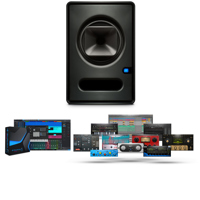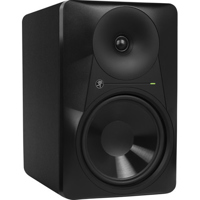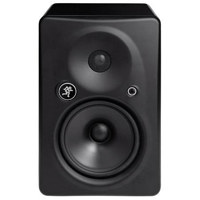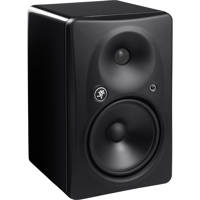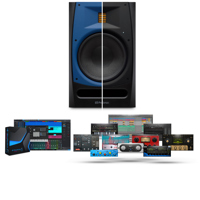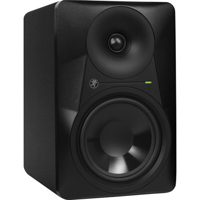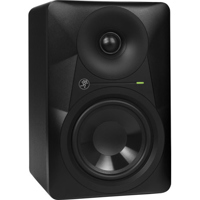Studio Monitors
7 resultsSave 5% Every Day† with the Adorama Edge Card. Learn More
PreSonus Sceptre S6 2-Way 6.5" CoActual Studio Monitor with Software Suite
- Exceptional sound quality with studio monitors.
- Precise, flat response for critical mixing tasks.
- Coaxial design ensures accurate stereo imaging.
- Powerful output for professional studio use.
- Balanced XLR & TRS inputs offer versatile connectivity.
Mackie MR824 8" 85W 2-Way Powered Studio Monitor, Single
- 8" Mackie studio monitor delivers accurate imaging.
- Wide 38 Hz - 20 kHz frequency response for clear sound.
- 85W powered monitor ensures optimal power handling.
- Acoustic Space Control maintains a flat response.
- XLR, RCA & 1/4" inputs offer versatile connectivity.
Mackie HRmk2 6.7" 2-Way High Resolution Studio Monitor, 140W, THX pm3
- Precise studio monitors: Flat response, accurate imaging.
- 6.7" woofer ensures exceptional sound quality clarity.
- 1" tweeter delivers pristine high-frequency response.
- 140W bi-amplified power output for optimal performance.
- Versatile connectivity: XLR, 1/4" TRS, and RCA inputs.
Mackie HRmk2 8.75" 2-Way High Resolution Studio Monitor, 250W, THX pm3
- Exceptional sound quality: 37Hz-20kHz frequency range.
- Precise stereo imaging for accurate mixing decisions.
- 250W bi-amplified studio monitor power output.
- Flat response ensures neutral, uncolored audio.
- 8.75" woofer delivers deep, defined low end.
PreSonus R Series 8" AMT Studio Monitor with Software Suite
- Exceptional sound quality with AMT Studio Monitor.
- Precise stereo imaging for accurate mixing.
- Flat response ensures transparent audio reproduction.
- Powerful 100W Class D amplifier for clear output.
- Frequency response: 45 Hz - 22 kHz for full range.
Mackie MR624 6.5" 65W 2-Way Powered Studio Monitor, Single
- Delivers precise studio monitor sound quality.
- Wide frequency response: 45 Hz - 20 kHz (+/- 3 dB).
- Optimized stereo imaging for accurate mixing.
- 6.5" woofer provides powerful, clear low end.
- 65W of power for professional studio monitoring.
Mackie MR524 5" 50W 2-Way Powered Studio Monitor, Single
- Precise studio monitors: Flat frequency response.
- 5.25" woofer ensures accurate, dynamic sound quality.
- 1" tweeter provides superior, clear audio imaging.
- Optimized power handling: 50W for professional use.
- Flexible connectivity options for studio integration.
Special Order
